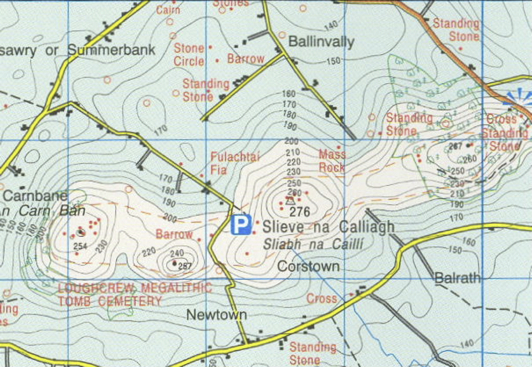Royal Canal Way
Work began on the construction of the 146 km long Royal Canal, to connect Ireland's capital city, Dublin, with the upper River Shannon in 1790, and the canal was completed in 1817. It operated in competition with the Grand Canal which ran an almost parallel route never more than 30 km to the south, and with the Grand, was made redundant by the advent of the railways in the mid-19th century. The canal was officially closed to all navigation in 1961, but like the Grand Canal, much of the Royal has been restored in recent decades, and the Royal Canal Way currently follows grassy towpaths, gravel and sometimes tarmac canal-side roads from the Dublin suburb of Ashtown 105 kilometres to the village of Abbeyshrule in County Longford. Some sections of tow path can be muddy. Further restoration will take the navigable canal and the walking route all the way to the Shannon. There is a good range of options for overnight accommodation along most of the route: it is, however, relatively easy to walk some sections and return to your starting point by public transport. Apart from the glorious, linear cordon of unspoilt countryside the route provides, there are a number of significant examples of late-eighteenth century industrial archaeology to admire along the way, including the Ryewater Aquaduct which takes the canal high over the Rye river, and which took six years to build.
Maps and other information
External Links
Trail Management
Waterways Ireland,
Floor 2 Block C,
Ashtowngate,
Dublin 15
Tel 01-8680148
Email: info@waterwaysireland.org
Facilities
Car parking
At Start - none
At End - on Street in Cloondara
9 kms or 12% of the Way follows local roads. There may be some waymarking issues at some points along the trail.
***Dogs under effective control allowed. Please clean up after your dog***

Map Guides
Guide to the Royal Canal of Ireland - The Waterways Service & Inland Waterways Association of Ireland.

OSI Maps

Public Transportation
At Start: Rail Check with: Iarnrod Eireann.
Bus Check With: Dublin Bus.
At End: Good bus service; Check with Bus Eireann.
. Rail Check with: Iarnrod Eireann.
John from Kildare
Looking West from Kilmore Bridge looks very undeveloped.
James from Meath
david from Dublin
Track from cross guns bridge to Blanchardstown was in very good state with an even surface and no debris
There is quite a bit of oncoming traffic in terms of bikes and pedestrians coming into the city but the path is generally wide enough to allow passage in opposite directions simultaneously
After the M50 flyover which is pretty spectacular the path transitions to grass which was quite muddy and slippery in the frosty November weather but manageable if quite slippery but there was nobody coming from the other side with the exception of a few dog walkers
The section before Coolmine station was very difficult with lots of rocks and tree roots on a very narrow path with a steep up to 7-8m drop
Certainly not for the faint hearted and the tires on my tricross bike both succumbed forcing me to take the train from Coolmine to Luisa Bridge
On the way back I cycled as far as Coolmine after fixing my punctures and the path was grassy, muddy and very slippery but manageable with my light as the track was unlight
I then went on road from Coolmine to Blandchardstown where again I took the cycle path into town
The Coolmine section is best avoided or walked unless you are an experienced mountain biker
Isla from Longford
Isla from Longford
The first three miles of the Longford branch in this direction are not as attractive as the canal itself is very overgrown, but it improves as you get nearer the town. Parking is easily available in Clondra. In Longford the nearest access point is in a housing estate but there is ample parking in the town if you continue on a little past the end, to the old end of the canal (Rear Market Square), or slightly closer at the train station.
Dominic from Westmeath
Vincent from Dublin
My experience is as follows:
a) you need a bicycle with plenty of gears, due to the various surfaces of the trail. My bike is commuter bike, with mid width tyres and 24 gears.
b) I left the convention centre at 10.00am, had a 1 hour break for early lunch at Maynooth, and arrived at Enfield at about 14.45.
c) In some places it is necessary to pass through mud which went right over the rim of my wheel. Most of the muddy sections are very short.
d) Many sections are not suitable for children.
e) I did not see one boat on the canal moving.
f) I met about 6 cyclists, and a good number of walkers.
g) The scenery, flora and fauna were beautiful, except for the two geese opposite the entrance to Carton House, who tried to eat my tyres.
h) The only places to stop for a meal are Maynooth and Kilcock.
Anthony from Kildare